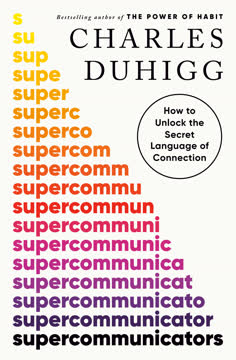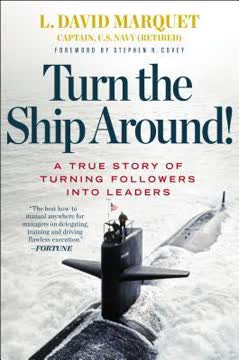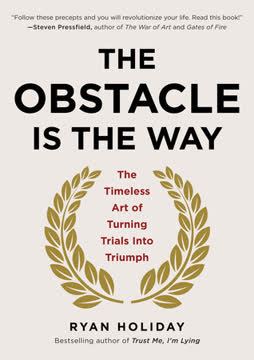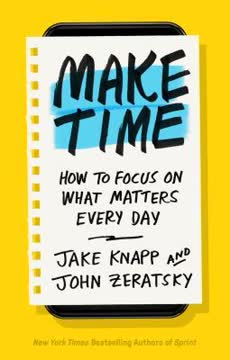Key Takeaways
1. Reading Fuels Leadership
“Not all readers are leaders, but all leaders are readers.”
Leadership and Reading. Reading isn't just a pastime; it's a leadership imperative. While not every reader becomes a leader, every effective leader cultivates a habit of reading. This isn't limited to leadership books; reading broadly enhances understanding, decision-making, and communication skills, all essential for modern leadership.
Benefits of Reading. Reading improves your ability to understand people, sharpens your decision-making skills, enhances your communication, and fosters creativity. These are all essential characteristics of a modern-day leader. Reading widely, including fiction, biographies, and books outside your immediate field, contributes to a well-rounded perspective.
Reading to Lead. It's a combination of the act of reading and what you read. By reading books related to skills, disciplines, and characteristics relevant to your work, you'll be better positioned than others to "take the lead" in life and business. Reading is a continuous investment in your leadership potential.
2. Readers Earn More
“The richest and most successful people in the world have read themselves to riches and great rewards, often starting with little or nothing, and so can you.”
Reading and Career Advancement. Reading isn't just an intellectual pursuit; it's a career accelerator. Studies show a direct correlation between reading habits and professional success, with readers more likely to hold managerial positions. Reading expands your knowledge base, sharpens your skills, and opens doors to new opportunities.
Research-Backed Benefits. Reading improves decision-making skills, reduces stress, enhances empathy, boosts creativity, and improves communication. These benefits translate directly into improved job performance and increased earning potential. Reading is a cost-effective way to invest in your career.
Lifelong Learning. In today's rapidly changing world, lifelong learning is an economic imperative. Reading is one of the most accessible and affordable ways to acquire new skills and stay ahead of the curve. Embrace reading as a continuous process of professional development.
3. Reading Combats the Slow Decline
“I find television very educating. Every time somebody turns on the set, I go into the other room and read a book.”
The Decline of Reading. Despite the clear benefits, reading is on the decline. This trend presents an opportunity for those who prioritize reading to gain a competitive edge. The decline in reading is influenced by factors like wealth, education, and the allure of digital distractions.
Attention Economy. The modern world is characterized by a constant battle for our attention. Television, social media, and the internet compete for our time, often at the expense of reading. Being intentional about where you allocate your attention is crucial for reclaiming time for reading.
Digital Age Challenges. The digital age presents unique challenges to reading, including information overload, browsing habits, and shortened attention spans. Overcoming these challenges requires conscious effort and strategies for minimizing distractions. By setting boundaries with technology, you can create space for reading and reap its rewards.
4. Excuses Are Removable Barriers
“You don’t have to burn books to destroy a culture. Just get people to stop reading them.”
Overcoming Reading Excuses. Many people avoid reading due to common excuses like lack of time, money, or interest. These excuses are often rooted in limiting beliefs and can be overcome with a shift in mindset. Recognizing and addressing these excuses is the first step toward building a reading habit.
Common Excuses. Common excuses include "I don't have time," "I don't have the money," "I don't like reading entire books," and "I don't know what to read." Each of these excuses can be dismantled with practical strategies and a commitment to prioritizing reading.
Transforming Beliefs. Rewiring your perspective about reading is about experiencing the transformative effects books provide and becoming the person you want to become—not remaining who you are. By challenging your excuses and taking small steps, you can unlock the power of reading and achieve your goals.
5. Curate Your Reading List
“If we encounter a man of rare intellect, we should ask him what books he reads.”
Reading with Purpose. Not all reading is created equal. To maximize the benefits of reading, it's essential to be purposeful in what you choose to read. This involves aligning your reading with your personal and professional goals.
Six Ways to Choose Books. Read for personal change, personal enrichment, spiritual enlightenment, professional development, wisdom, and recommended books. Each of these categories offers unique opportunities for growth and learning.
Building a Personal Library. Your personal library should be a reflection of who you are and a map leading you to where you're going. Curate your collection with intention, selecting books that will challenge you, inspire you, and equip you for success.
6. Time Management for Readers
“Employ your time in improving yourself by other men’s writings so that you shall come easily by what others have labored hard for.”
Prioritizing Reading. Finding time to read requires a conscious commitment and a willingness to prioritize reading over other activities. This involves making a decision to schedule time for reading and protecting that time from interruptions.
Reviewing Life's Rhythms. Track your time to identify areas where you can free up more time for reading. This involves auditing your daily and weekly activities and identifying time-suckers like excessive social media use or television watching.
Replacing Activities. Replace time spent on less valuable activities with reading. This might involve trading fifteen minutes of social media scrolling for fifteen minutes of reading or listening to audiobooks during your commute. By making small adjustments to your schedule, you can create significant time for reading.
7. Craft a Personalized Reading Plan
“A goal is not about what you accomplish. It’s about what you become.”
The Importance of a Reading Plan. Reading without a plan is like wandering aimlessly through a library. A reading plan provides focus, direction, and accountability, ensuring that you make the most of your reading time.
Five Steps to a Reading Plan. Know your "why," set realistic reading goals, pick categories or genres, track your reading, and choose your titles. These steps will help you create a personalized reading plan that aligns with your goals and interests.
Flexibility and Adaptation. A reading plan is not set in stone. Be prepared to adjust your plan as your interests and priorities evolve. The key is to maintain a long-term commitment to reading, even when life gets busy.
8. Absorb, Don't Just Scan
“The reading of all good books is like a conversation with the finest minds of the past centuries.”
Reading as a Conversation. Reading isn't a passive activity; it's an active conversation with the author. To truly absorb a book, you need to engage with the material, ask questions, and challenge assumptions.
Comprehension vs. Retention. Reading comprehension is understanding what you read as you read, whereas reading retention is later remembering what you read. Both skills are essential for maximizing the benefits of reading.
Six Steps to Absorption. Get an overview, ask questions, write in your book, take notes, review your notes, and take action. These steps will help you to comprehend and retain what you read, transforming knowledge into action.
9. Accelerate Your Reading Pace
“With ordinary talent and extraordinary perseverance, all things are attainable.”
Dispelling Speed-Reading Myths. Speed-reading is often misunderstood. While it's not about reading thousands of words per minute, it is about improving your reading efficiency and comprehension.
Determining Your Reading Speed. Before you can improve your reading speed, you need to know your baseline. Test your reading speed to establish a starting point for your improvement efforts.
Practical Techniques. Prepare your reading environment, read in short blocks of time, guide your reading, and use the hop method. These techniques will help you to eliminate bad reading habits and increase your reading speed.
10. Skim Strategically
“There is no deficit in human resources; the deficit is in human will.”
Strategic Skimming. Skimming isn't just for slackers; it's a valuable skill for efficiently extracting key information from books. When done correctly, skimming can improve comprehension and save time.
When to Skim. Skim-reading is appropriate for familiar topics, research, and quick overviews. It's not suitable for learning new concepts, reading for pleasure, or studying religious texts.
Three Steps to Skimming. Get an overview of the book, break the chapters down into time blocks, and purposefully skim-read. These steps will help you to extract the most important information from a book in one hour.
11. Cultivate a Reading Habit
“We can’t become what we need to be by remaining what we are.”
The Power of Habits. Habits are the building blocks of our lives. By cultivating a reading habit, you can transform yourself into a lifelong learner and achieve your goals.
Building a Reading Habit. Remove your reading obstacles, create an easy-to-use habit tracker, start small, seek private and public accountability. These strategies will help you to form a sustainable reading habit.
Never Stop Reading. Reading is a lifelong journey. There will never be a time when you "arrive" or know everything. Embrace reading as a continuous process of growth and learning.
12. Master Skills Through Reading
“When you sell a man a book, you don’t sell him 12 ounces of paper and ink and glue—you sell him a whole new life.”
Reading for Mastery. Reading isn't just about acquiring knowledge; it's about mastering skills. By focusing your reading on a specific topic and applying what you learn, you can achieve expertise in any field.
A Step-by-Step Process. Know your "why," focus on one topic, make micro-goals, create your own curriculum, summarize what you read, reinforce your reading, and take action. These steps will guide you on your path to mastery.
Continuous Growth. The journey to mastery is never-ending. Embrace reading as a continuous process of learning, growing, and evolving. By consistently applying these principles, you can unlock your full potential and achieve your goals.
Last updated:
Review Summary
Read to Lead receives mostly positive reviews, with readers praising its practical advice on improving reading habits and leadership skills. Many found the book inspiring and valuable for both avid readers and those new to regular reading. Reviewers appreciated the tips on reading faster, retaining information, and creating reading plans. Some critics felt the content was basic for experienced readers or too focused on business books. Overall, readers found the book motivating and useful for personal and professional development through reading.
Similar Books










Download PDF
Download EPUB
.epub digital book format is ideal for reading ebooks on phones, tablets, and e-readers.




